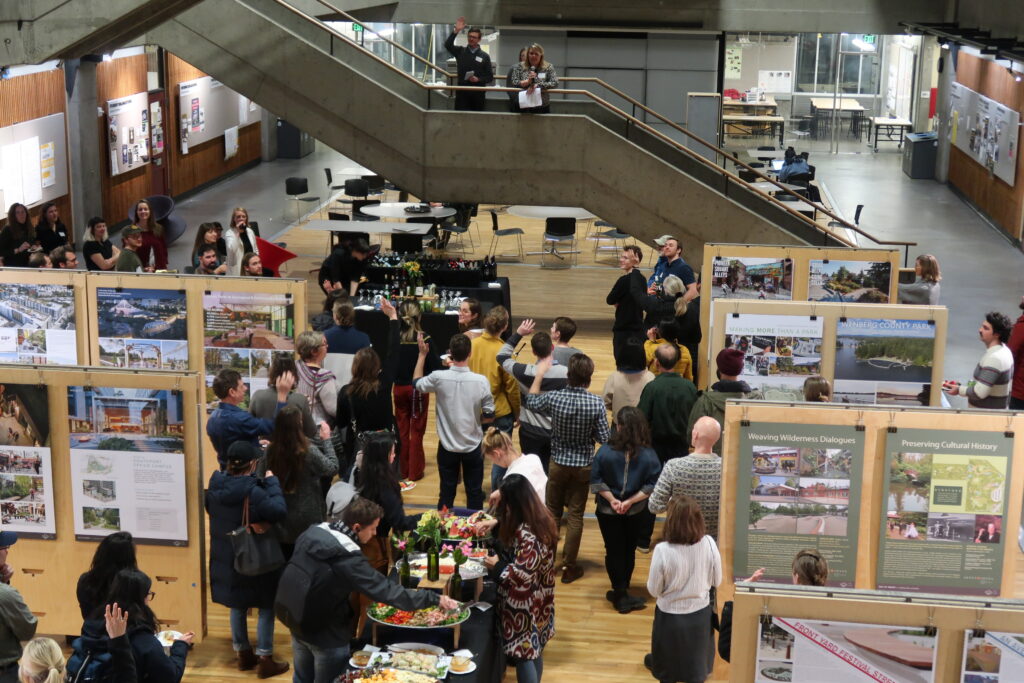This month we are spotlighting landscape architect Craig Skipton (MLA ’03). He currently lives in Bainbridge and works at AHBL.
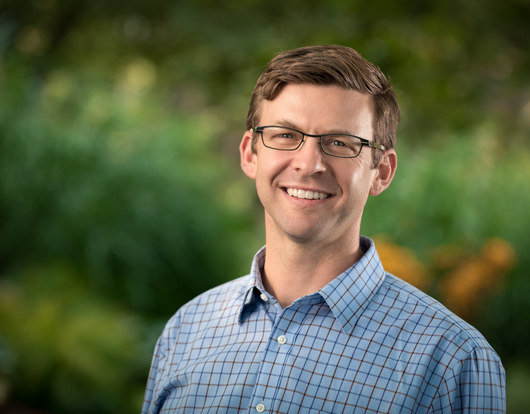
UWLA: Could you start by outlining your professional journey between graduating and today?
CS: My educational journey was a long and sometimes arduous path. I started in community college out of high school and took a winding path, trying to find my way in school. I spent a couple of years in community college. Then I took a year off and returned to community college, reinvigorated. I then went to Western Washington University (WWU) as a transfer student in the environmental sciences, my major. I spent a few years there and graduated with my Bachelor’s in Environmental Science. The program there is fantastic! I just had a lot of great professors there and had a great experience as an intern. I interned in Massachusetts at Harvard Forest Long Term Ecological Research Station for an extended summer. I worked with an amazing group of scientists doing ecological research. I completely fell in love with soil and soil science. I was on a major long-term latitudinal study where the effects of soil respiration and all the factors that change soil respiration. Soil respiration is when gases are released from the soil. The study tracked multiple variables but focused on carbon dioxide. I was in the field taking all of those data points for that team that summer. It was just amazing and super eye-opening.
When I left Harvard Forest and graduated from WWU, I wanted to be a soil scientist or ecologist. I started looking around and realized I was looking for a career taking scientific knowledge and applying it to real-world applications. We know so much already, and I wanted to be part of the application of all this knowledge. I was looking for some way to take that – tons of scientific knowledge that is relevant and applicable to the world we live in – and apply it. So, as I looked at graduate programs in ecology, I attended lectures about urban planning, architecture, and landscape architecture at The Pennsylvania State University – I was living in central PA then. These lecturers caught my eye and imagination. So after hearing Randy Hester, William McDonough, and Pliny Fisk and talking with other inspiring people, like Eliza Pennypacker, I found my path to landscape architecture and started applying for schools. I also was very excited to discover the LA program at UW in my home state of Washington.
UWLA: What is the kind of work you do with AHBL?
CS: AHBL is a multidisciplinary design company with civil engineers, structural engineers, land use planners, site surveyors, and landscape architects. We have four offices around Washington and work on a wide range of projects across those four offices. As landscape architects, we work on everything for public and residential clients. We cover a wide range of work, including parks, playgrounds, trails, and housing – private residences, urban infill, highrises, green roofs, and industrial warehouses – the entire spectrum. It’s fun because your plate’s always full of different things.
UWLA: How long have you been at AHBL?
CS: I started in 2016, so this is my 7th year in April.
UWLA: What kinds of projects have you worked on during those seven years?
CS: When I joined AHBL, we worked on many K-12 schools. We were working on renovations, additions, and new schools, all over the Puget Sound region. One project that stands out is Central Kitsap Middle School and High School, which is near and dear to my heart. The combined middle and high school is in Silverdale, WA, and was a huge project with 100 feet of grade change across it. We started with the conceptual grading and then continued to lay out the site, including the courtyards, the synthetic turf fields, and everything. It was an enjoyable ground-up project.
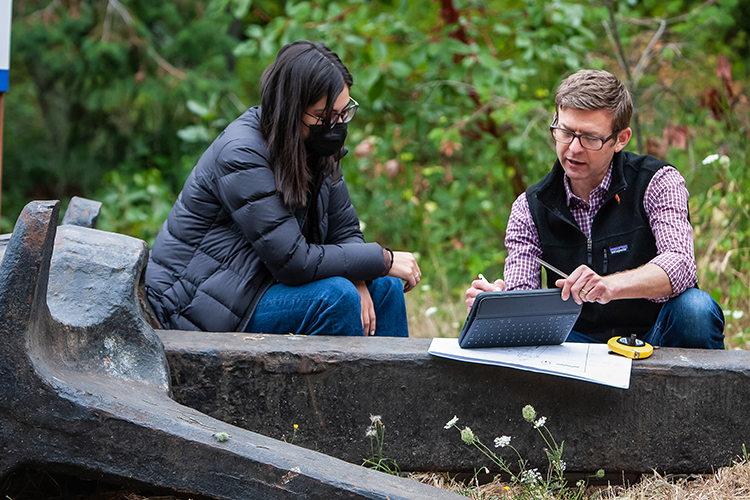
UWLA: How long does a project like that take?
CS: Sometimes it feels like it takes forever! The construction was finished during COVID, but the school opened in the Fall of 2019. So all told about four years.
UWLA: How long are you doing the drawings portion of that?
CS: It’s a good solid year. It takes at least one year to get everything in place and then get that to the contractor.
UWLA: What would you say most excites you about this work?
CS: I come from a glass-is-half-full kind of perspective. Even though the project for Central Kitsap was terrific, as a landscape architect, there is a long way to go to improve educational environments for the future of education. The world of education is slowly realizing that putting kids in rooms and expecting them to sit in chairs all day long is not the end solution for education. And so, I guess that’s what keeps me going. The hope is that someday we’ll get there, and we will keep advocating with clients, school districts, the public, and people to try to get them to realize that there are other ways. That’s what keeps me going—that hope.
On my path to landscape architecture, when I was in central Pennsylvania, I couldn’t find a job in environmental science. For a while, I worked on a farm, which fed a part of my soul. Then, I got a job at a Quaker school as an assistant teacher for a fifth and sixth-grade class. Connecting with those kids was such a great experience for me. I supported the classroom with math and science education. Also, I led outside activities and worked to create engaging lesson plans to connect with nature. Regularly, we walked to a nearby park, took off our shoes, hugged trees, and sound journaled. One of those experiences seemed a bit random then, but looking back gave me a platform to build.
UWLA: How did you end up working at AHBL after all of these experiences?
CS: My journey to now is atypical in some ways.
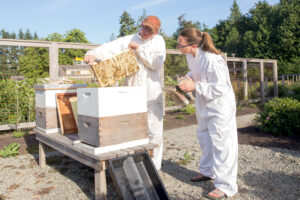
After graduating from UW, I started working in landscape architecture at Swift Company as an intern before I graduated. In 2005, I joined the team at Mithun and worked there in 2011. Then, I had a crazy thing happen. I had the opportunity to jump into a passion area and do it full-time. So, in 2011, I left Mithun and started farming full-time. I designed, built, maintained, and operated a farm and did that for five years. It was a blip in my career, but it was extremely worthwhile. I learned so much during this time – how to run a business starting with multiple business plans, manage employees, and operate a farm. It was a unique and valuable experience. I parted ways with Heyday Farm in 2016. After five years away, I returned to the office-based version of the profession. It was an odd time in the economic cycle, but I was looking for opportunities. I found one at AHBL by chance.
UWLA: Where is the farm?
CS: Heyday Farm is on Bainbridge Island and still in operation. We handed it off to other farmers doing the fantastic work of bringing food to tables. The farm story is a good one. My wife and I worked with the landowners. We were hired as farm managers to develop and operate the farms – roughly 30 acres of land. It was a big live-in design-build project, where I was drawing plans at night, farming and coordinating construction during the day. Heyday Farm is on the south end of Bainbridge Island but is worth the trip. They host community dinners and take reservations on the weekends. There is also a bakery out there now, so it’s pretty amazing how much it’s grown. Check it out at www.heydayfarm.com.
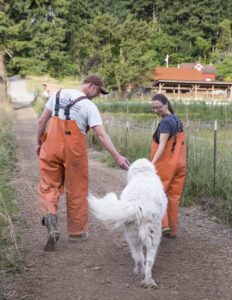
UWLA: How would you say that your MLA helped you on this path?
CS: My Master’s in Landscape Architecture degree is a vast and excellent foundation to build on. It enables me to take an idea or thought into visual reality. That was one of the most incredible things to happen in school, taking an idea and making something you can visualize with people before it’s built. So many people are visual and don’t know it or need to see graphics or a plan to understand. Getting people to see and feel what their ideas could be like is invaluable, and I’ve learned this skill from the MLA program at UW.
UWLA: Is there something that you did in your MLA program that is something you recommend current students do? Something that might have helped you get to where you are today?
CS: The things that helped me were starting those relationships with professional practitioners and getting those connections while in the program. I still talk with several senior landscape architects practicing when I was in school – it became a great mentor relationship. We did some engaging charettes through the department that Julie Johnson put together. They were all related to schools, so I met practitioners focused on K-12 education and participated in those charettes. Those were unique experiences and helped me do what I’m doing now.
UWLA: Would you say that you had a key mentor during your experience? Or was it the creation of multiple mentors that was really helpful for you?
CS: I’ve had some significant people, primarily super helpful professors. As I mentioned, Julie Johnson she’s fantastic and pushed me as my thesis committee chair. She encouraged me to grow and try new things, which was super helpful. Kristina Hill, an amazing professor, challenged the design side of things and made us work and grow. As an undergrad, Peter Homann at WWU College of the Environment opened my eyes to our interconnected world in a biogeochemistry class that made everything click for me.
UWLA: Is there a pivotal moment within your MLA education that you can think of that became an ah-ha moment?
CS: That’s a tough one. There were so many moments in grad school, especially in the studios. For example, the process to finalize a studio project, where you finish your ideas, develop all the boards, get through the printing process, put up your presentation in Gould Court, and then host your final critique. It’s just that whole process, like being reborn each time. So each of those moments for every quarter and then every year were these excellent experiences. The additive element of these experiences was pivotal for me.
UWLA: When you think back on your career, how do you think your time at UW prepared you?
CS: The foundation has been vital to me, having that solid base to build upon. I came to UW with an environmental science lens or way of thinking, a different construct for approaching the world. In landscape architecture, you’re trying to be creative and free-thinking but also trying to connect it to that science that is objective and peer-reviewed. That’s one thing I have been trying to do, continuing to merge these two realms because that drives me.
UWLA: Where do you see your work going, what’s next for you? Projects you’re excited about?
CS: Right now, I’m the director of landscape architecture for Western Washington at AHBL. A big part of my work is diversifying what we do as landscape architects—working to engage people’s passion areas, which is significant for me—and finding ways to bridge science and landscape architecture. We started doing research through our summer internship program and engaging our interns to help us in this process. We’ve done it for three years and want to grow the research topics. We are trying to bring in observational data through primary research and study. We’re researching and learning to help us inform our design process as we move forward.
UWLA: Any parting words of wisdom? Thoughts you want to leave with?
CS: The profession’s future is up to those who engage with it, and I think that’s also a massive amount of hope for me. This engagement component, engaging the future landscape architects, is massively important. We need creative minds and problem-solvers. It is finding ways to engage them in middle and high school and helping people understand that the profession exists. It is getting people involved in the world outside of walls. Diversifying our work and bringing in people with various backgrounds is critical to understanding the best solutions for everybody.
